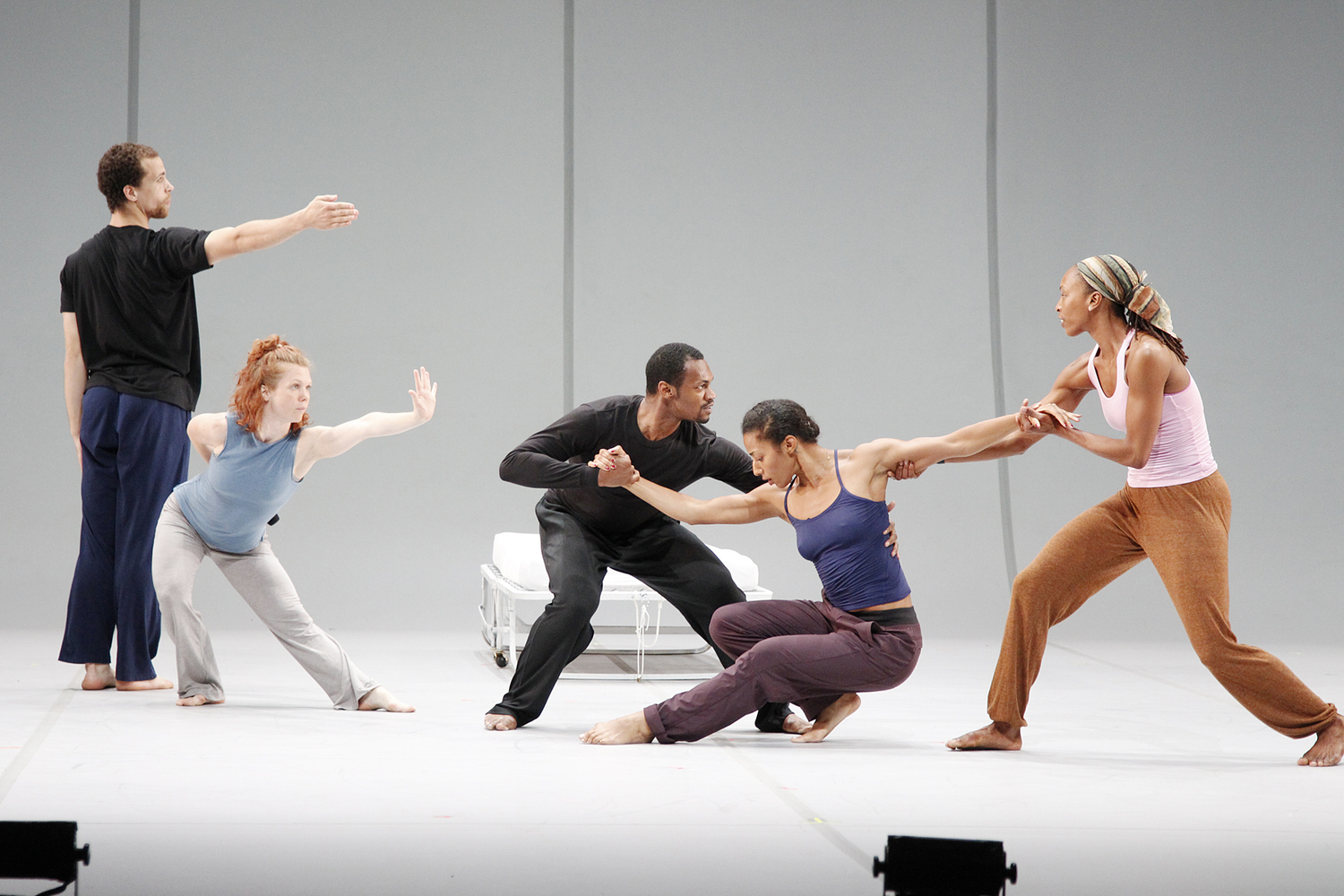Review: BILL T. JONES/ARNIE ZANE COMPANY ANALOGY TRILOGY: DORA: TRAMONTANE at The Kennedy Center

The Bill T. Jones/Arnie Zane Company of New York Live Arts has a formidable reputation - the company is known for its innovative, musically-driven works that often incorporate vocal and stagecraft techniques into the dance performances. The Company's Analogy Trilogy began development in 2013, and the first work, Dora: Tramontane, premiered in 2015. In the subsequent years, the piece has evolved and has been joined by the rest of the trilogy: Lance: Pretty aka the Escape Artist (2016) and Ambros: The Emigrant (2017). The three works are inspired by oral histories and W.G. Sebald's novel The Emigrants.
This weekend, Kennedy Center is offering the Analogy Trilogy over the course of three evenings in concert with an art display titled The Human Journey. The title is fitting not only for the stunning photos featured in the Kennedy Center's lobby, but also for the Analogy Trilogy itself. The Bill T. Jones/Arnie Zane Company's trilogy is a retelling of the human journey, and the result is a series of beautiful performances that are emotional and universal.
Dora: Tramontane, the first of the trilogy, is based on the oral history of Dora Amelan, a French Jewish nurse and social worker who spent the Second World War working for an underground Jewish Organization, OSE, that operated in Vichy France's internment camps, Gurs and Rivesaltes. The company recounts Dora's incredible story - from her family's hotel closing in Belgium at the start of the war to their perilous journey to South France to her efforts to help those interned and deported by the Nazis - in a performance that reflects the emotional core of the story and the wonderful artistic decisions that have earned the company's reputation.
The progression of the piece is gradual: at its opening, the company (Vinson Fraley Jr, Barrington Hinds, Shane Larson, I-Ling Liu, Penda N'diaye, Jenna Riegel, Christina Robson, Carlo Antonio Villanueva, and Huiwang Zhang) is dressed in modern sweats, as though at a rehearsal, and the stage appears bare, save for a small table with a pair of stools and microphones in the corner. As a brief recording of Dora's oral history plays, the company lifts and shifts three simple set pieces, creating a versatile scene that flows with their movements and her tale (the work of Associate Scenic Designer Solomon Weisbard). The story itself starts slowly, with Dora recounting her family's hotel in a vacation town in Belgium to long, languid movements. As the story shifts to Dora's mother's illness and the bombing of Antwerp, the music and the steps become more frenzied, and the audience is swept into her journey at such a dizzying pace that it's impossible to catch your breath before being hit with news of Dora's grandfather and cousins, who were taken to the camps and whose fate was unknown until Dora visited Yad Vashem in Jerusalem after the war. By the time Dora and her sisters reach their father's family in France, nearly half the company has changed from their modern sweats into 40s-style outfits (courtesy of costume designer Liz Prince) and the set has expanded to include a bed and a wooden structure. Company members take turns telling Dora's story, acting as Dora herself and her interviewer. They begin at the little table on the side of the stage, narrating as their colleagues dance, but as the story picks up they begin to carry the microphones and speak as they dance, sometimes so deeply involved in the dance that who is acting as Dora's voice becomes harder to single out. The deeper into Dora's story we go, the more immersed the company - and the audience - becomes.
.jpg)
Dora's story is certainly heartbreaking and impressive, but the company's performance is also deserving of these descriptors. The dancers execute a complex, emotional performance worthy of her story; the build-up was so intense that, when they are celebrating the end of the war with steps reminiscent of a hora (a celebratory Jewish dance performed by joining hands and moving in a circle), I found myself crying. The company also deserves tremendous credit for not only their dancing, but their skillful (and never labored) recitation of Dora's history, as well as the occasional interludes of song. Their acting and their ability to incorporate all components seamlessly is part of the immersive process, and the result is stunning.
Of course, Bill T. Jones' distinctive choreography remains the center of the piece. The performance he has created with the help of Associate Artistic Director Janet Wong is breathtaking and insightful, and is beautifully informed by Creative Director Bjorn G. Amelan, (who is also Dora's son, which brings a nice additional personal element to the piece). Composer Nick Hallett provides a stunning mix of period and modern musical influences, and is accompanied by baritone Matthew Gamble and pianist Emily Manzo.
Dora: Tramontane may be the first of a trilogy, but it has the power to stand on its own as well as part of a set. The work is breathtaking and emotional, and - like any good piece of art - stays with you long after the final bows. If the rest of the Analogy Trilogy is even half as good, it's well worth getting to the Kennedy Center this weekend.
The Bill T. Jones/Arnie Zane Company's Dora: Tramontane was performed at the Kennedy Center on March 28th; its companion pieces, Lance: Pretty aka the Escape Artist and Ambros: The Emigrant play on March 29th and 30th, respectively. Tickets can be purchased online or at the Kennedy Center box office. Each performance is roughly 80 minutes with no intermission, and is followed by a discussion with the company and creative team.
Reader Reviews
Videos

